Solar screens for windows are the easiest, biggest payback for the smallest investment. For a few dollars a year, you can keep a lot of heat out of your house, save on energy costs, and make a room more comfortable on sunny days. Of course, the overall value depends on the installation; yours may be overly difficult or impossible due to window configurations or accessibility. While large, southern-exposed picture windows are the best candidates because they have the greatest effect on solar radiation, they’re sometimes difficult to completely cover without creating some ugliness in the process.
Types of Solar Screens
Insulating Solar Control Film
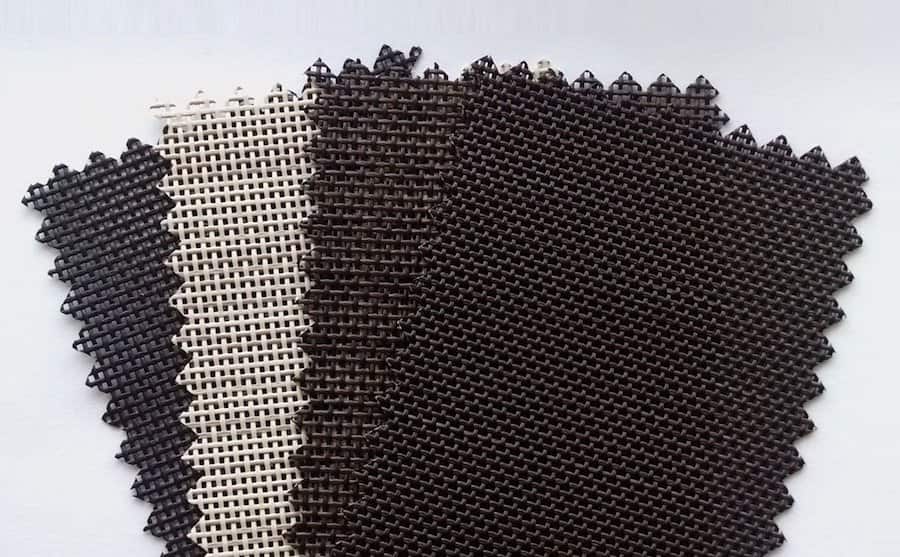
A modified solar control film designed to be adhered to the interior of windows provides conventional solar control function and has greatly improved insulating properties. With solar control films you can still preserve the view but block the unwanted UV light, and lower the solar heat gain. These films come in various opacities or "openness factors" marked by percents (%). Generally, the higher the specified percent value the more light is transmitted through the solar screen material
Semi-Transparent Window Shades
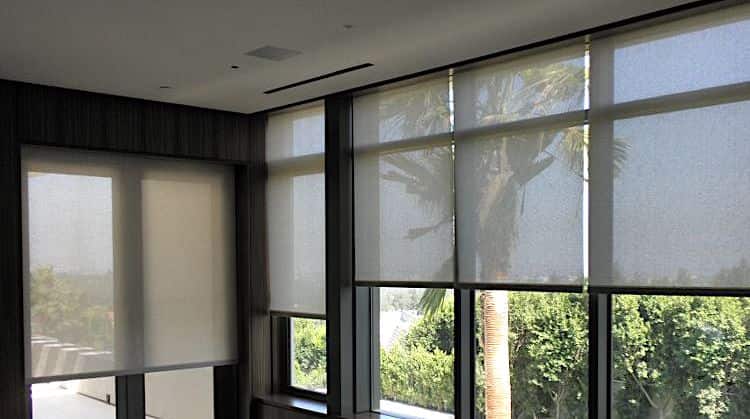
Roll-up window shades made from a variety of tinted or reflective solar control film laminates. These shades provide most of the benefits of solar control film applied directly to glass but provide additional flexibility and may be retracted on overcast days or when solar gain is desired. Shades available with spring operated and gravity (cord and reel) operated rollers as well as motorized options.
Louvered Metal Solar Screens
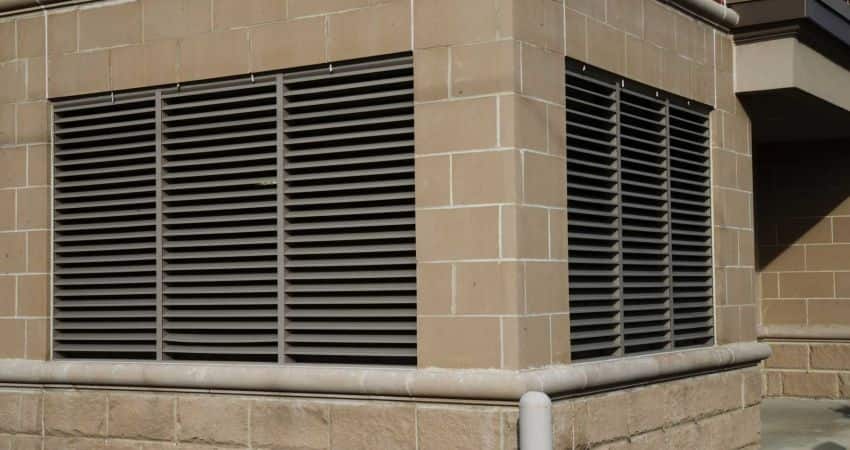
This type of solar screen consists of an array of tiny louvers which are formed from a sheet of thin aluminum. The louvered aluminum sheet is then installed in conventional screen frames and may be mounted against a window in place of a regular insect screen or mounted away from the building to provide free air circulation around the window. View to the outside is maintained while substantially reducing solar gain. Available in light green or black finish with shading coefficients of 0.21 or 0. 15, respectively.
Another type of louvered metal solar screens consists of an array of tiny fixed horizontal louvers which are woven in place. Louvers are tilted at 17° to provide sun control. The screen material is set in metal frames which may be permanently installed in a variety of configurations or designed for removal. Installed screens have considerable wind and impact resistance. Standard product (17 louvers/inch) has a shading coefficient of 0.23; low sun angle variant (23 louvers/inch) has a shading coefficient of 0.15. Modest reductions in winter U value have been measured.
Operable External Louver Blinds
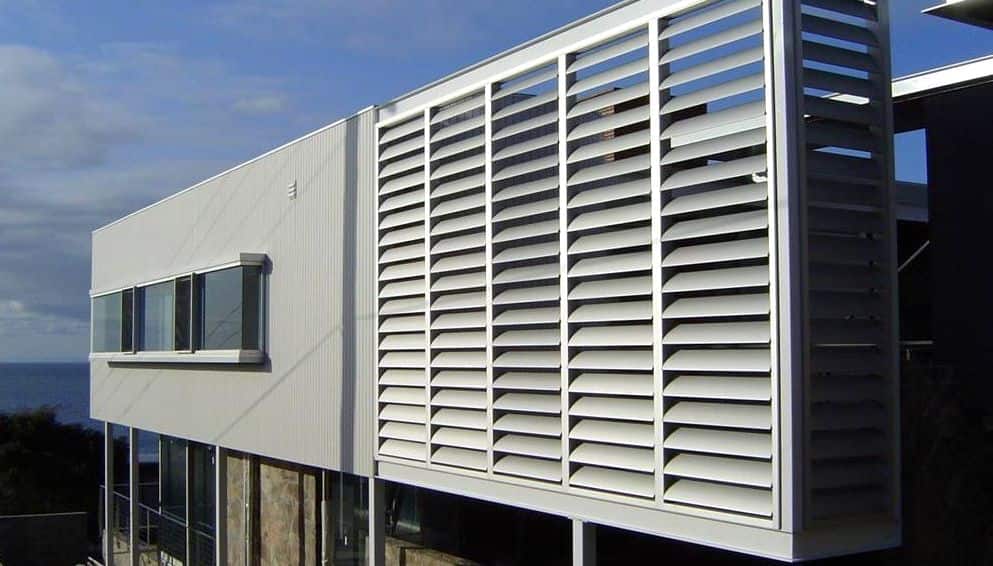
Solar control louver blinds, mounted on the building exterior, can be controlled manually or automatically by sun and wind sensors. Slats can be tilted to modulate light, closed completely, or retracted to admit full light and heat. Developed and used extensively in Europe, they provide summer sun control, control of natural light, and reduction of winter heat loss.
DIY Solar Screens
If you have one of those cheap bug screens that are so common installed on your windows then a good do-it-yourself project is to upgrade them to the solar shade type materials. You don’t need to change all the windows, just the ones where you want to inhibit sunlight. Big picture windows facing south are the best candidates. You can get a screen at most hardware stores, but you can get the better performing stuff online or in specialized solar catalogs. It’s a very good cost/ benefit tradeoff.
Automatic Retractable Shades
Automatic retractable shades are available from specialty suppliers. Big houses with two floors of continuous windows are generally good candidates for electrically retractable shades mounted outside on roller tracks. On hot summer days, the sunlight can be scalding, and without a shade the house would be uninhabitable. Plus in the winter, they can act as insulators.
Retractable shades are also commonly used overhead for patios and porches, where late afternoon and evening sunlight can prevent you from using the area. In this case, leave them up all day, or your floor will heat up. Let the shade heat up instead, because any breeze will quickly cool it off — not so with concrete or tile floors, which hold heat for a long time.
Exterior Or Interior Solar Screens?
With a blind inside, you can get the best insulation. However, the heat is inside because sunshine comes in through the window and strikes the blind. The gap between the blind and the window can get very hot because of the greenhouse effect. This result is desirable in the winter but not the summer, when you may have a cooler room if you just leave the window uncovered and let the sun and air in.
You can get interior blinds made to warm a room in the winter if that’s your main goal. They absorb sunlight, and they also provide insulation where you need it. On the other hand, interior blinds for summer reflect a lot of light on the outside (exterior) surface, which may be made of a different material or made a different color, from the inside surface. In general, a white blind works well for reflecting sunlight the best, but you can also find (more expensive) specially coated blinds that reflect the maximum amount of sunlight.
With exterior solar screens, most of the sunlight is gone before it even gets to the window. The exterior sunscreens for windows get hot, and you end up with an insulation barrier to keep that heat trapped, but it’s all outside the window, which makes for a cooler interior. This is good for summertime but counterproductive for winter.
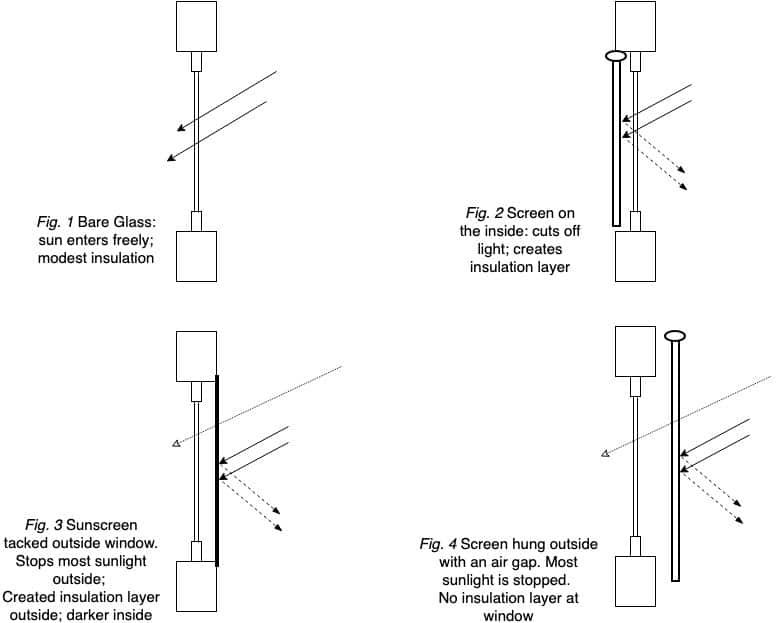
| Window Covering Options | ||
|---|---|---|
| Type of Covering | Sun | Insulation |
| Bare Glass | Sun enters freely | Minimal Insulation |
| Screen on the inside | Absorbs sun on the inside; controls lighting and enhances decorative qualities in the room; may also completely block view light | Creates excellent insulation layer inside — good for cold climates or winter |
| Screen tacked on the window's exterior | Stops most sunlight outside; darker inside but with unobscured views | Creates insulation layer outside; heat is stopped outside so that the interior of the room is cooler; best for hot climates |
| Screen hung outside with an air gap | Stops most sunlight outside, but with unobscured views | No insulation layer at the window; maximum cooling effect, especially in breezy locations |
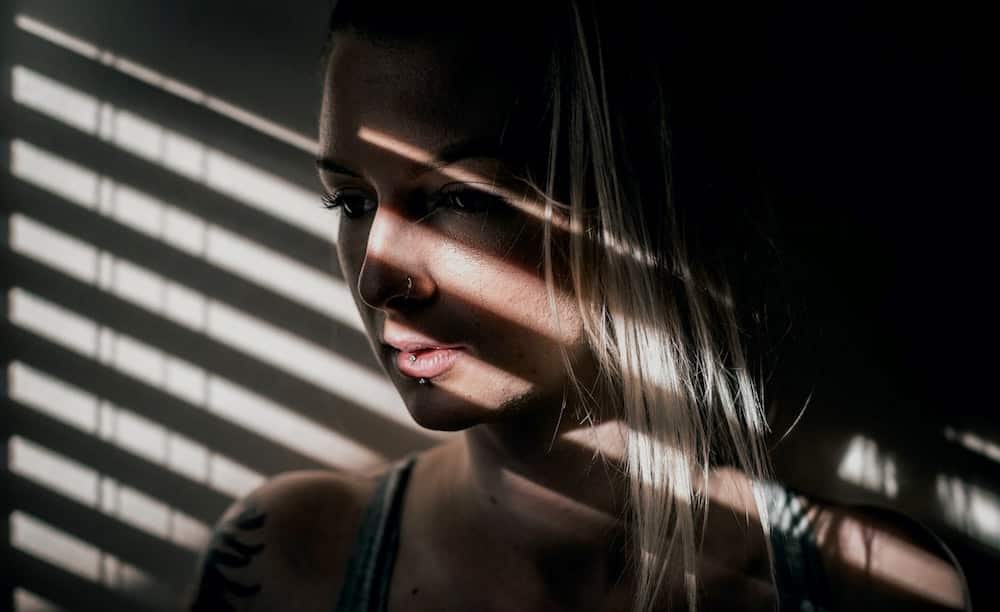






Comments